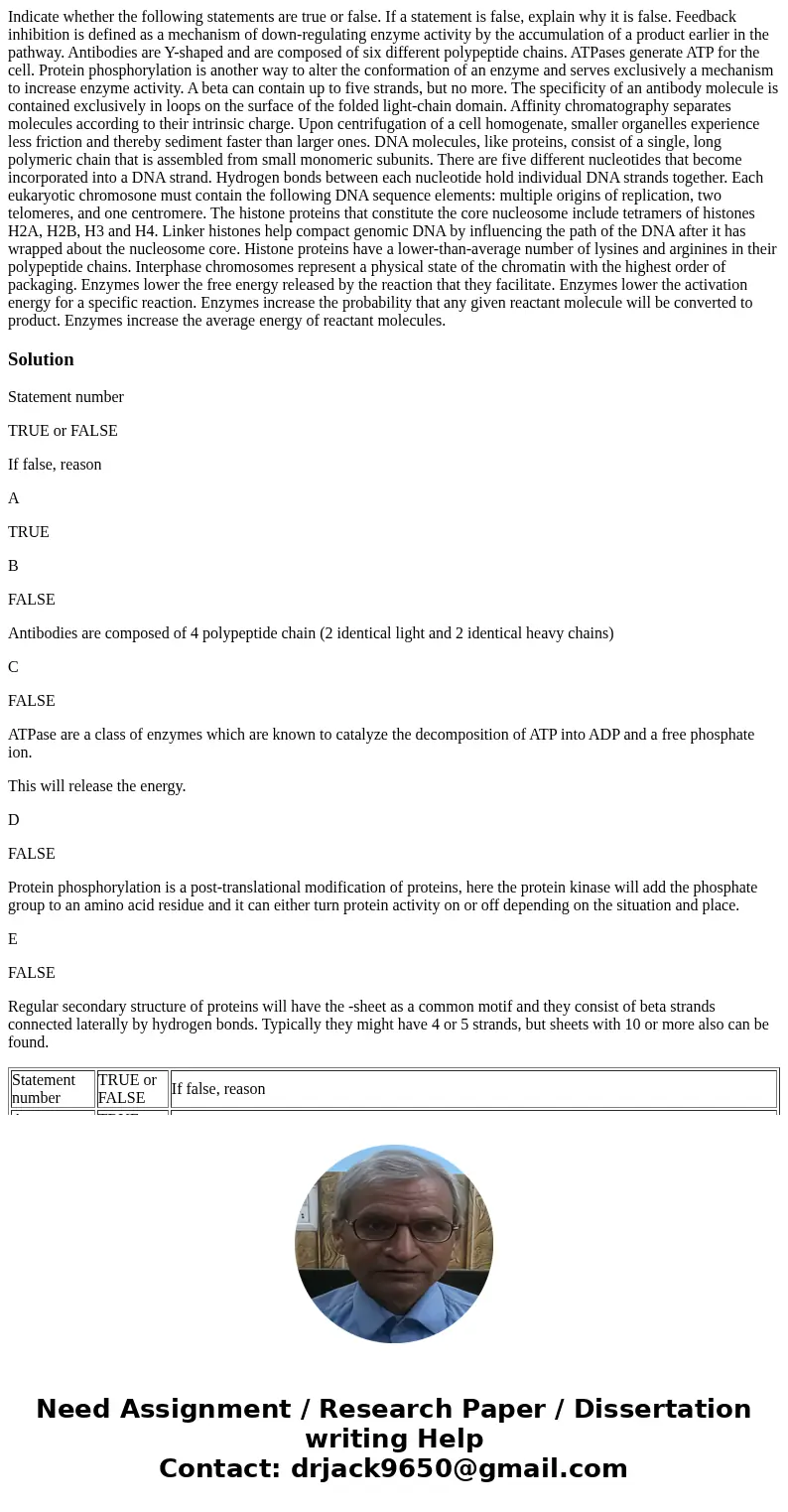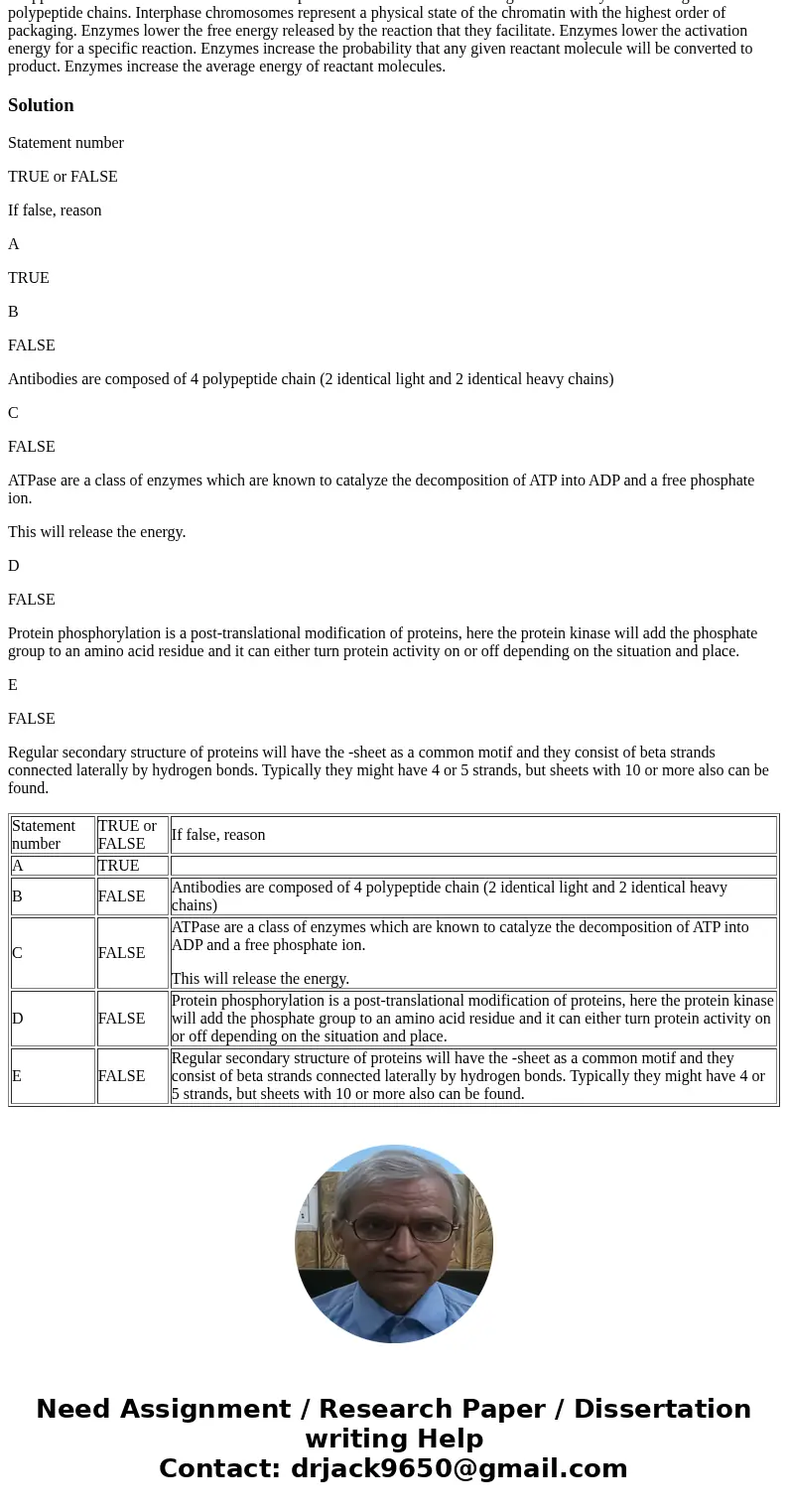Indicate whether the following statements are true or false. If a statement is false, explain why it is false. Feedback inhibition is defined as a mechanism of down-regulating enzyme activity by the accumulation of a product earlier in the pathway. Antibodies are Y-shaped and are composed of six different polypeptide chains. ATPases generate ATP for the cell. Protein phosphorylation is another way to alter the conformation of an enzyme and serves exclusively a mechanism to increase enzyme activity. A beta can contain up to five strands, but no more. The specificity of an antibody molecule is contained exclusively in loops on the surface of the folded light-chain domain. Affinity chromatography separates molecules according to their intrinsic charge. Upon centrifugation of a cell homogenate, smaller organelles experience less friction and thereby sediment faster than larger ones. DNA molecules, like proteins, consist of a single, long polymeric chain that is assembled from small monomeric subunits. There are five different nucleotides that become incorporated into a DNA strand. Hydrogen bonds between each nucleotide hold individual DNA strands together. Each eukaryotic chromosone must contain the following DNA sequence elements: multiple origins of replication, two telomeres, and one centromere. The histone proteins that constitute the core nucleosome include tetramers of histones H2A, H2B, H3 and H4. Linker histones help compact genomic DNA by influencing the path of the DNA after it has wrapped about the nucleosome core. Histone proteins have a lower-than-average number of lysines and arginines in their polypeptide chains. Interphase chromosomes represent a physical state of the chromatin with the highest order of packaging. Enzymes lower the free energy released by the reaction that they facilitate. Enzymes lower the activation energy for a specific reaction. Enzymes increase the probability that any given reactant molecule will be converted to product. Enzymes increase the average energy of reactant molecules.
Statement number
TRUE or FALSE
If false, reason
A
TRUE
B
FALSE
Antibodies are composed of 4 polypeptide chain (2 identical light and 2 identical heavy chains)
C
FALSE
ATPase are a class of enzymes which are known to catalyze the decomposition of ATP into ADP and a free phosphate ion.
This will release the energy.
D
FALSE
Protein phosphorylation is a post-translational modification of proteins, here the protein kinase will add the phosphate group to an amino acid residue and it can either turn protein activity on or off depending on the situation and place.
E
FALSE
Regular secondary structure of proteins will have the -sheet as a common motif and they consist of beta strands connected laterally by hydrogen bonds. Typically they might have 4 or 5 strands, but sheets with 10 or more also can be found.
| Statement number | TRUE or FALSE | If false, reason |
| A | TRUE | |
| B | FALSE | Antibodies are composed of 4 polypeptide chain (2 identical light and 2 identical heavy chains) |
| C | FALSE | ATPase are a class of enzymes which are known to catalyze the decomposition of ATP into ADP and a free phosphate ion. This will release the energy. |
| D | FALSE | Protein phosphorylation is a post-translational modification of proteins, here the protein kinase will add the phosphate group to an amino acid residue and it can either turn protein activity on or off depending on the situation and place. |
| E | FALSE | Regular secondary structure of proteins will have the -sheet as a common motif and they consist of beta strands connected laterally by hydrogen bonds. Typically they might have 4 or 5 strands, but sheets with 10 or more also can be found. |


 Homework Sourse
Homework Sourse